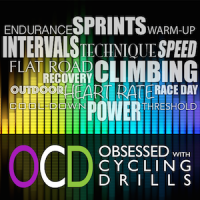OCD: Get Yourself Connected
This drill is perfect for those who are just learning how to teach with power. It shows your riders very clearly how heart rate response can be very different at different cadences, even when output is the same. This drill may become a “light bulb moment” for your riders and their understanding of how power—and their body—works! For that reason, it may be the most important educational drill in your repertoire.Read more…









